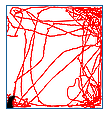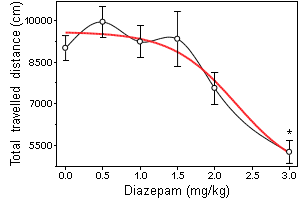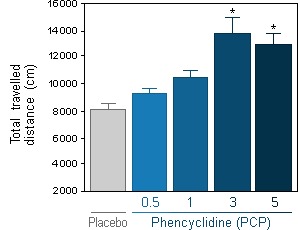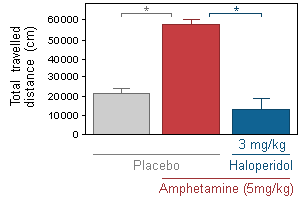Newsletter # 74

Animal models
-
Detection of the potential: Sedative effects
Diazepam induces a dose-dependent reduction of the locomotor activity of mice in theopen-field supporting its sedative effect. -
Detection of the potential: Psychotomimetic effects
Phencyclidine (Angel dust) induces a dose-dependent increase of the locomotor activity of mice in theopen-field and thus mimics the positive symptoms ofschizophrenia . -
Detection of the potential : Antipsychotic effects
Haloperidol suppresses Amphetamine-induced hyperlocomotion. Amphetamine-induced hyperstimulation is commonly used as a model for the positive symptoms ofschizophrenia and thus supports antipsychotic potential of haloperidol.
Get in touch


 PREVIOUS
PREVIOUS





